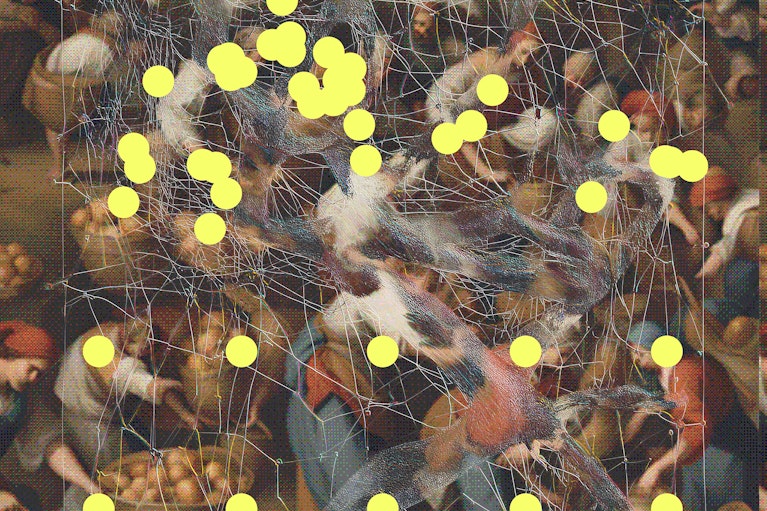Jeantine E. Lunshof is an ethicist in the Church lab at Harvard Medical School’s Department of Genetics and an assistant professor at the University Medical Center Groningen, University of Groningen, Netherlands.
CAMBRIDGE, Mass. — It came as a shock in 2015 when researchers in China published experiments to genetically modify non-viable human early embryos. Emotions ran high and propelled a wave of activities addressing ethical and technical concerns in genome editing. Headlines featured questions on “where to draw the line.” Some called for a ban.
Where to draw the line is frequently asked with new developments in genome editing, especially when the genome editing tool CRISPR is mentioned. Ethicists — professional or by ambition, individuals or committees — are called upon and expected to provide answers, to show where to draw the line. However, in biology — the science of living systems — there are no definite answers. At most, there are lines in the sand that are washed away by the next wave of discovery. The theoretical ethics quest for deep answers is slow, remote from and outpaced by the developments at the bench.
One practical solution is to bring the philosophy and ethics toolbox to the floor of the lab itself, to the point where the lines begin to be drawn in the first place.
I’m a philosopher and ethicist working in a genomics lab, and I have witnessed the early development of genome editing and the debates over its applications. The prospect of gene therapy revived old discussions on interventions in the body of the treated individual only (somatic) versus interventions that via the germline (eggs and sperm) will be inherited by future generations. This is déjà vu of the debates in the 1980s. As before, the strongest call for drawing fundamental and non-negotiable lines applies to human germline editing.
In California, a group of academics and scientists made recommendations to “encourage” further fundamental research and to “discourage” any premature attempts at the clinical use of human germline editing. Later that year, a committee of scientists and ethicists at the International Summit on Human Gene Editing proposed a list of criteria without which it would be “irresponsible to proceed with any clinical use of germline editing,” while “intensive basic and preclinical research is clearly needed and should proceed” to enable reaping the benefits of novel therapies. No walls were or have been erected since. At most, dotted lines were drawn.
Meanwhile, newer gene editing technologies are on the horizon, and while technologies have changed, arguments have not much. Old debates are being revisited.
Developments in stem cell research and cell and tissue engineering have triggered a vitally important discussion about research: should the longstanding and widely agreed upon limits to human embryo research be changed? The current line is clear: embryo research in vitro can be performed until the 14th day after fertilization or until the appearance of the so-called primitive streak — the earliest cell formation of a developing nervous system, usually around day 13 — whichever comes first.
That limit might change, or it might not. But while the deliberation and decision-making on stopping rules will be political in the broadest sense of the word, it is the work at the bench that confronts us with new realities in biology.
For example, what if we see the spontaneous development of structures typical of early embryos in a group of cells that has nothing to do with embryos? Scientists in our lab and elsewhere have observed groups of pluripotent cells, originating from human skin cells, self-organize into a cell cluster that then shows the features of a primitive streak. Is that an embryo? Probably not. While there are features in that group of cells that are like those found in embryos, the origin of the entity does not fit with our most fundamental understanding of an embryo as originating from an egg and sperm cell (in mammals). We do not have a name for this. In our case, after long deliberation, we decided to call these self-organized cell clusters “synthetic human entities with embryo-like features.”
Other genome engineering work may result in constructs that are far more unfamiliar. As a consequence, they are much harder subjects for conceptual analysis. Genome engineering has advanced to the stage where reading information from genome sequences — from whatever organism — is no longer the limit. Editing technologies, CRISPR-based or otherwise, enable the synthesis of genomes and eventually bestow them with functions that the relevant organism does not have “by nature.”
Also, it is possible to recode genomes of simple organisms that, while remaining functional, do not occur with this genetic make-up in the natural world. They are designed to remain separate within a natural environment. The potential real-world impact of such constructs and their properties is currently being studied by scientists and is awaiting philosophical and ethical assessment.
Cases like the ones above put the question of drawing lines in a radically new light. The arrival of never-before-known biological life forms forces us to rethink our concepts and the norms that apply. Conceptual analysis does not make for catchy headlines but requires work early and on site: the frank conversation at the bench, the collegial interaction between scientists, ethicists and others willing to engage at this frontier level of fundamental research.
Ethicists are called upon when developments in the sciences elicit strong moral intuitions, but an expert opinion needs hands-on, real-world data gathered in the biological engineering lab through direct interactions. Importantly, however, these professional ethics assessments aren’t done to manufacture justifications for research areas or experiments and should not be advertised or perceived as such.
In biology, the “lines” are nowhere near. That is not a failure of science and not a reason for moral alarm. Putting stop signs on the road requires good arguments, and those need to be carefully developed. Science is fast, conceptual analysis is slow, and any ethical evaluation needs both the bench-side facts and philosophical reflection. The moral imperative for ethicists is to be on the spot, in person, on time.
This was produced by The WorldPost, a partnership of the Berggruen Institute and The Washington Post.





